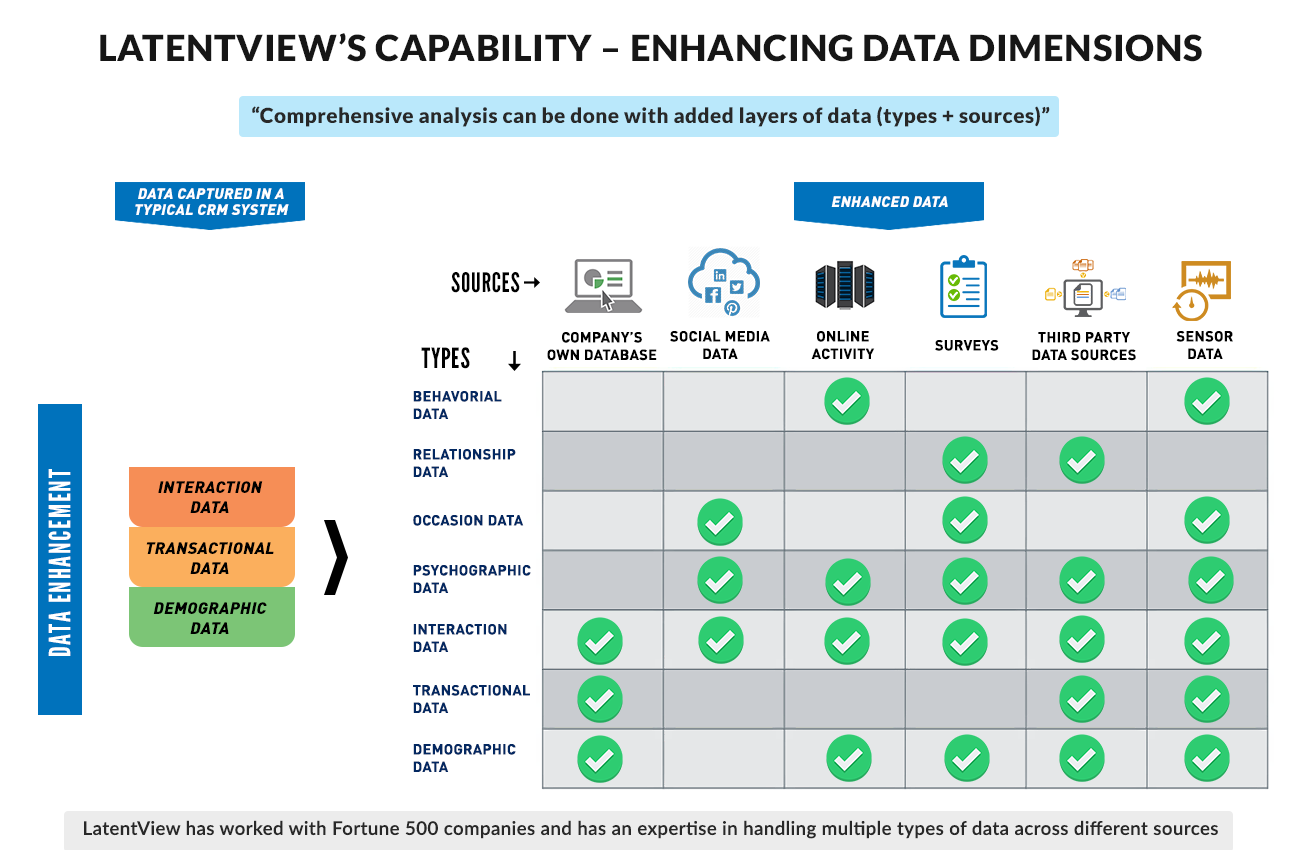Build a comprehensive 360 customer profile:
Creating a truly comprehensive profile of a customer requires tapping into multiple data sources and touchpoints. These include internal, external and syndicated sources. A large portion of a profile may come via unstructured data, especially from sources such as social media data, sensor data, surveys and more. An increase in information sources results in a larger data pipeline and puts greater emphasis on data quality. The right technologies, people and partners to qualify, process and help understand what the data reveals is essential to understanding the 360-degree view of the customer to drive impactful business decisions.
Big Data, Big Models & Big Compute expands the scope of analytics:
The use of analytics is exploding thanks to better technology – cost-effective big data storage, more powerful analytics services and access to better algorithms. Organizations now have the ability to drive better business outcomes by leveraging multiple big data and analytics techniques. While most companies view prescriptive analytics as the most advanced of all analytics techniques, predictive and diagnostic type of analytics are also powerful in their own right. Depending on the business model, predictive analytics is used for scenarios like setting prices or evaluating inventory. Companies who are looking to understand the why and how of a business challenge can employ the diagnostic approach.
Customer Intelligence is at the forefront of Digital Transformation:
Digital Transformation across industries requires organizations to deliver personalized, relevant content on a 24×7 basis to enhance customer experience every single time across all touch-points. This means that Customer Intelligence has to move beyond analytical solutions created from structured data sources to incorporate techniques that can derive insights from unstructured and semi-structured data. The necessity to derive comprehensive customer insights has accelerated with companies coming up with digital only business models (Ex: Uber, AirBnB, etc.) and also traditional brick & mortar firms embracing digital in a big way. Thanks to open source software, analytics as a service, cloud-based infrastructures, organizations have all the tools at their disposal to re-imagine all aspects of Customer Intelligence, viz. Segmentation & Targeting, Acquisition, Engagement, Growth & Retention.
Edge analytics required for personalization:
A complete view of the customer is possible via more data from more places. Again, diversity in data sources represents both a significant challenge and opportunity for businesses seeking to become more digital and closer to customers. Segmented analytics in specific areas at the “edge” of a business such as mobile interactions or IoT sensors is going to become more important when it comes to understanding customer behavior and deliver a better customer experience. For example, automobile manufacturers will use in-vehicle sensor data to alert owners to schedule maintenance or when a warranty is about to expire. For a CPG company, sensor data inside a processing plant can be used take a machine offline before it breaks down, causing supply chain delays. Becoming better at reading edge data on this individualized level has obvious benefits for companies in any sector.
Customer journey mapping as the foundation for marketing analytics:
The question of who drives analytics in an organization, CFO, CMO or CIO, is debatable. It depends on the business, and there is no right answer. C-level buy-in for analytics is now a given, and the need to understand data is acute. While it’s an interdisciplinary endeavor, there’s no question that marketing is at the forefront when it comes to driving analytics in an organization. The desire for brand and customer insights is compelling companies to invest more seriously in analytics that map the customer journey more completely – from initial interactions at the point of brand awareness and perception to more structured engagements within the buying experience and measuring loyalty of existing customers.





